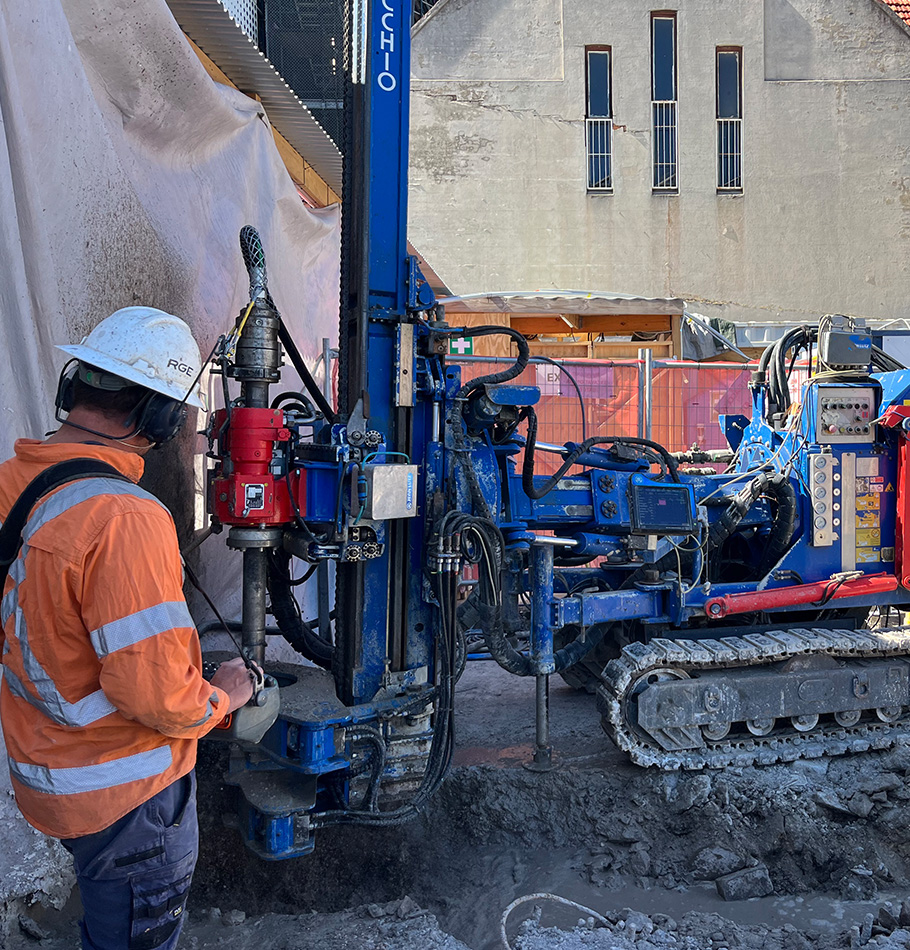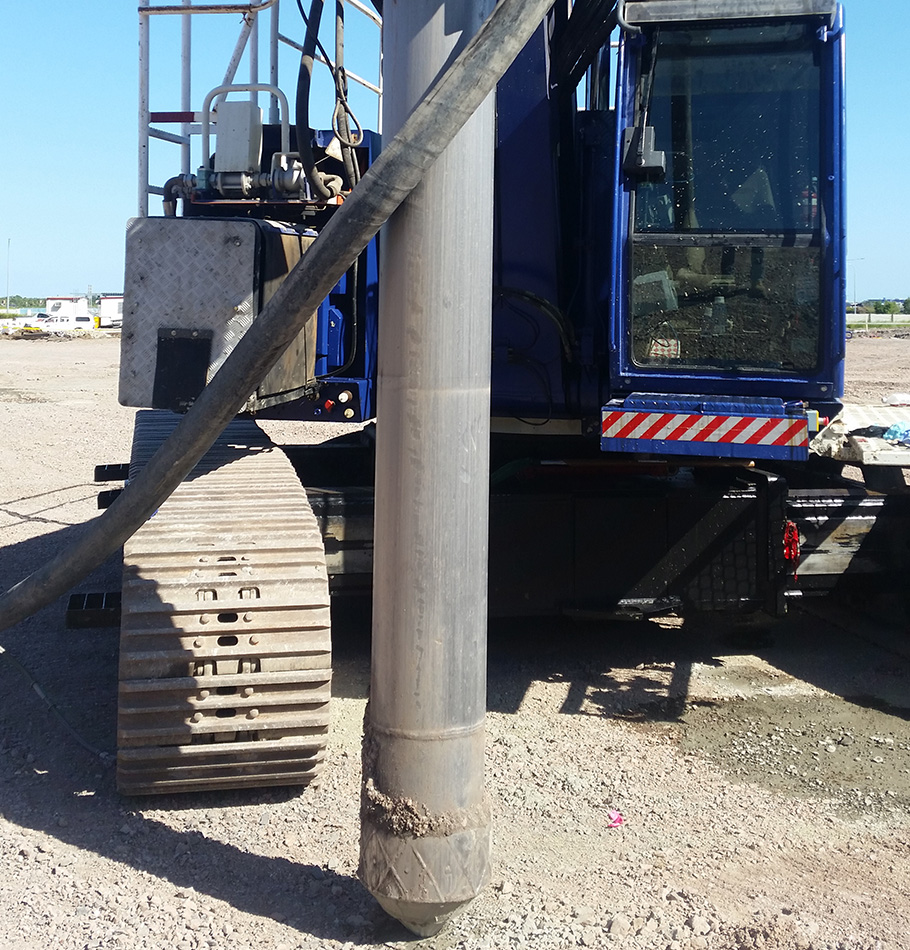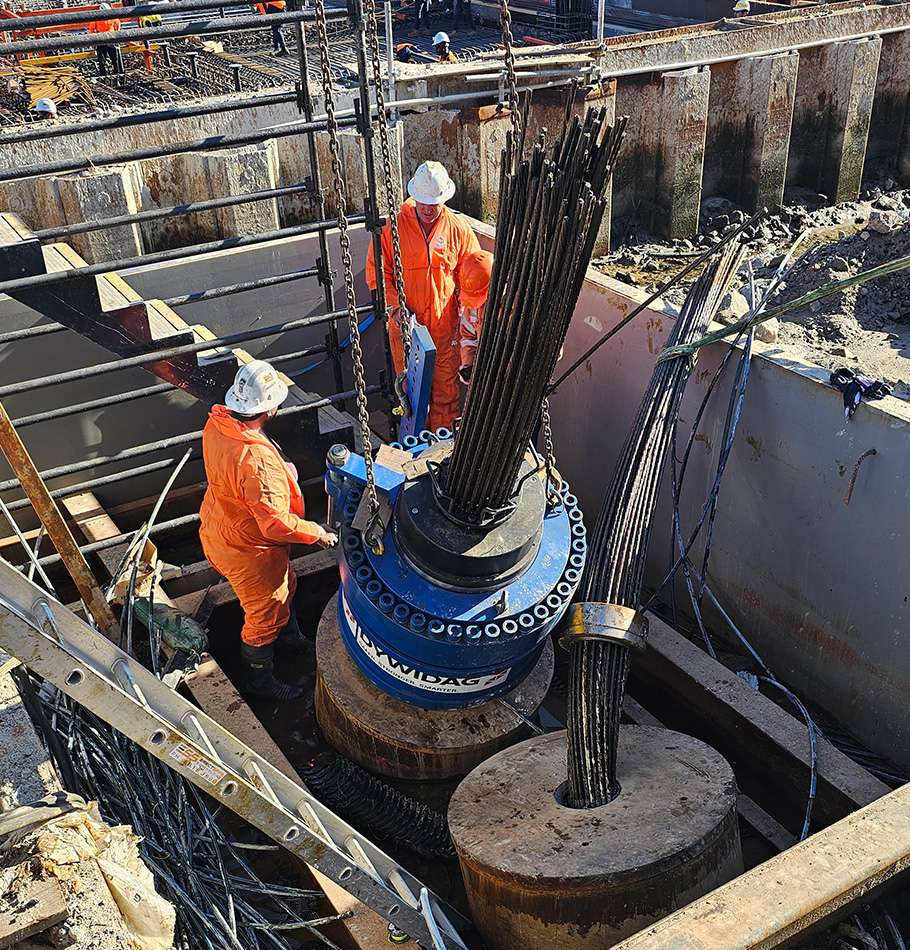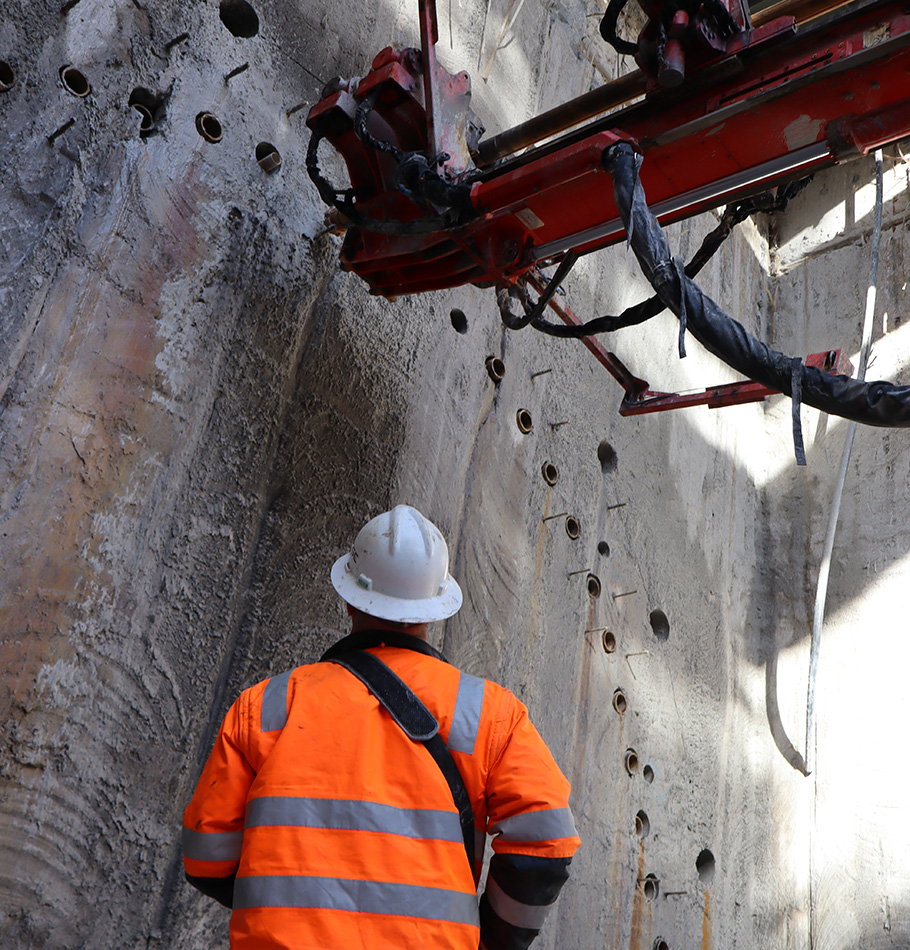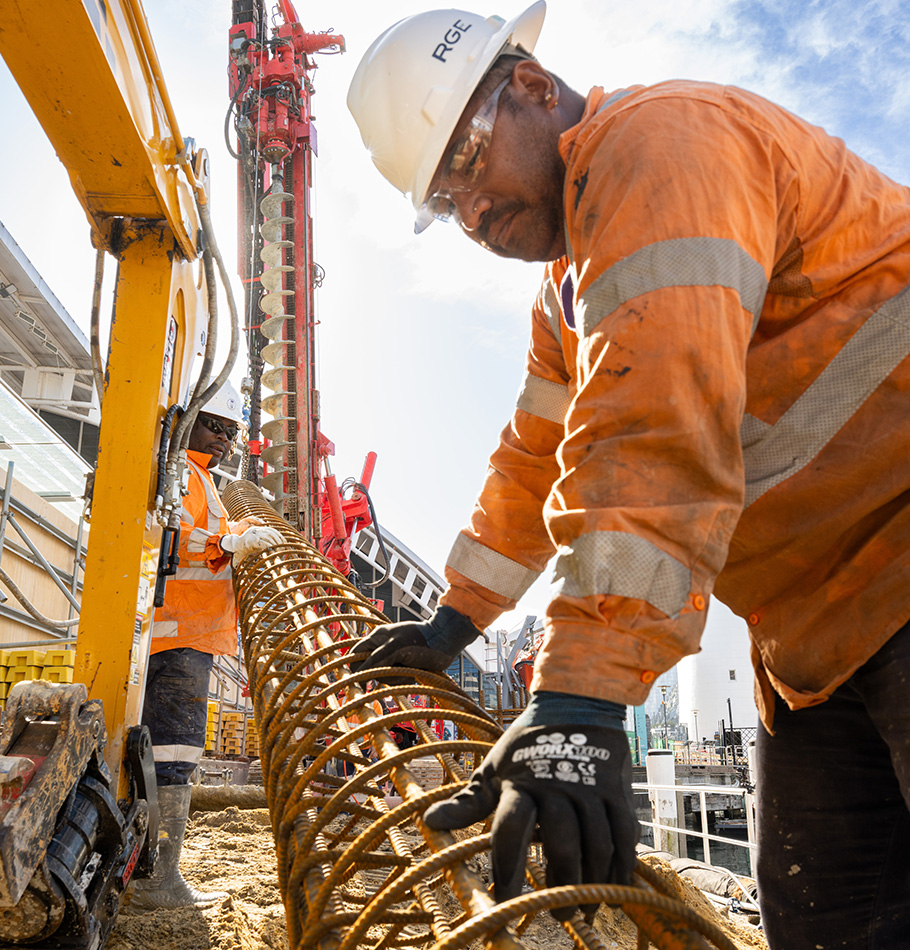Jet Grouting
Overview
Strengthen weak ground in restricted-access areas with minimal impact and maximum precision.
Jet grouting is an in situ ground improvement technique that utilises high-pressure grout jets to erode, mix and stabilise existing soils. Known as soilcrete, the resulting composite achieves strengths between 500 and 10,000 kPa and permeabilities as low as 1×10⁻⁸ to 10⁻⁹ m/s.
Favoured in confined and soft ground areas, this powerful jetting process has a keyhole surgery ability that is suitable for use underneath and in between existing structures.
RIX Ground Engineering (RGE) brings technical expertise, modern equipment, and a commitment to quality to projects across Australia. Whether working beneath a heritage home or stabilising soils for major infrastructure, our jet grouting technicians ensure accuracy, cost-efficiency, and compliance at every stage, no matter your site requirements.
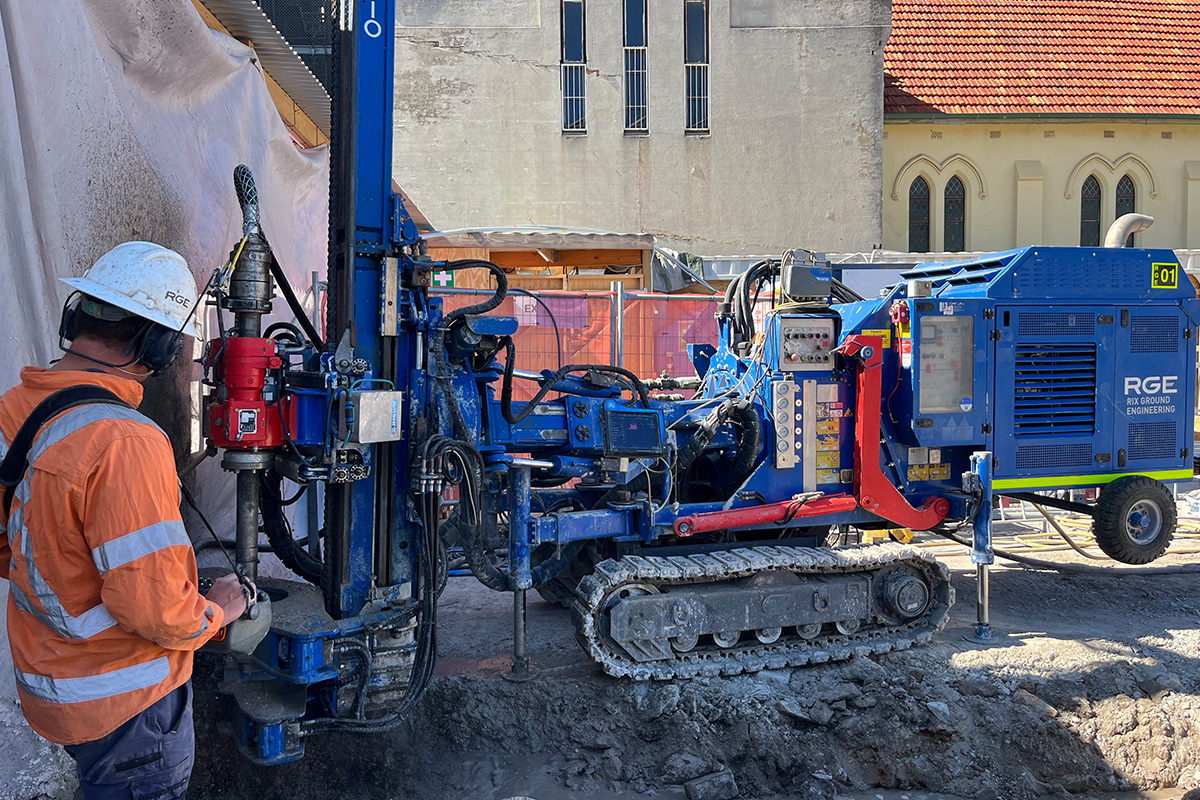
Jet grouting advantages
Superior strength & stability
Form a solid base for any structure. Often used to stabilise excavation sites, support foundations, and reduce settlement, jet grouting bolsters the ground’s load-bearing capacity. Grouted soil is denser, more resistant to movement, and less permeable to help block groundwater flow.
Unrivalled versatility
Favoured for its adaptability, jet grouting is effective in a wide range of soil conditions, including loose sands, soft clays, and silts. This process can also target specific soil layers at depth without affecting those above, making it a suitable solution for complex subsurface challenges.
Suitable for restricted access
From low-headroom basements to narrow trenches, this in-situ technique fits in tight spaces where other methods can’t. With equipment for directional drilling, inclined columns, and various mast sizes, it can be deployed in difficult-to-reach spaces.
Flexible geometry
Discover unmatched design flexibility. Custom jet grout columns, panels, plugs, or irregular shapes can all be formed in situ and around subsurface obstacles such as utilities. By adjusting pressure, flow, and drilling angles, we can adjust the size and geometry to suit your exact needs.
Minimal impact
The jet grouting process minimises noise, vibration, and dust, making it a low-impact solution for sensitive environments. It is often used in urban or operational areas where nearby structures, businesses, or utilities cannot be disturbed.
Rapid results
The cement-based grout cures quickly, allowing construction to move ahead without delay. In many cases, efficient jet grouting techniques accelerate project timelines by reducing the need for more disruptive ground preparation.
Sustainable practices
Jet grouting is engineered for efficiency. It allows existing structures to remain in place while construction work is carried out below.
Our jet grouting process
1. Site setup
Before work begins, we position the jet grouting system over the target treatment area. A grout batching plant (with silos, mixers, and pumps) and a high-pressure drilling rig are connected via grout lines.
2. Drilling to treatment depth
Using the rig, we drill a small-diameter hole down to the required depth. The drill rod carries the jet grout system, which will be used to treat the soil at that depth.
3. High-pressure grout injection
At the target depth, grout is pumped at very high pressures through small nozzles located at the end of the drill rod. This generates powerful fluid jets that cut into the surrounding soil.
4. Soil mixing & column formation
As the pressurised jets break up the soil particles, they mix them with the grout. The drill rod is slowly rotated and withdrawn upward to form jet grout columns with designed structural and hydraulic properties.
5. Jet grout column or panel design
Depending on the geotechnical needs and soil conditions, single, double or triple fluid jet grouting methods are used. These options allow us to construct either cylindrical columns, overlapping panels, or sub-horizontal structures.
6. Spoil management & disposal
As the soil is eroded and mixed with grout, excess slurry and displaced material rise to the surface. These materials are collected and transported off-site for environmentally responsible disposal.
7. Quality control
Each column is engineered based on the type and behaviour of the in-situ soils. Our technicians adjust the pressure, flow rate, and method accordingly to achieve cemented soil with the desired strength, stiffness, and permeability.
Frequently asked questions
What is jet grouting?
Suitable for a wide range of soil types, jet grouting is an in situ ground improvement technique ideal for use in complex or restricted spaces.
The high-velocity fluid jets erode soil and mix the particles with injected grout in situ to create strong structures underground. Jet grouting equipment is typically rotated and lifted during the process to form reinforced soil cement columns of varying shapes and sizes.
This versatile process significantly increases the strength, stiffness, and water resistance of the treated area.
What are common jet grouting applications?
The jet grouting process is used in construction to stabilise soil, control groundwater, and support existing structures. It is a flexible ground reinforcement technique commonly applied in:
- Underpinning the foundations of buildings
- Constructing retaining walls for deep excavations
- Creating impermeable barriers or cut-off walls for dams and basements
- Supporting tunnel roofs (pipe roofing) and shafts
- Strengthening soil around underground utilities
- Reducing settlement under structures
- Improving the load-bearing capacity of weak ground
This ground improvement method is especially effective in loose soils or soft clay, as well as confined spaces with limited headroom or access, such as basements or narrow shafts.
What column diameter can be created?
With a single 150mm diameter hole, jet grout can be used to create up to 3m diameter columns of soilcrete.
The exact column diameter depends on factors like soil type, grout pressure, flow rate, and the method used (single, double, or triple fluid systems).
Columns can be formed vertically, on an angle, or even horizontally to suit the design requirements of your construction project.
What is the difference between jet grouting and deep soil mixing?
Jet grouting techniques use high-pressure fluid jets to break up soil in situ and mix it with grout, while deep soil mixing mechanically blends soil with binders using rotating augers.
The key differences include:
- Jet grouting: Suitable for restricted access, working below existing buildings and structures and creating complex geometries. It creates precise, high-strength columns using fluid energy to construct cemented soil.
- Deep soil mixing: It requires larger machinery and is typically faster and lowers the cost, but less adaptable in tight or complex spaces.
Jet grouting is preferred when higher strength or tighter access is required, while deep soil mixing may be more cost-effective in larger open areas with soft ground.
At RGE, we are highly skilled in providing both services. Enquire today to get started.
What is the difference between jet grouting and permeation grouting?
Jet grouting replaces and mixes unstable soil with grout using high-pressure jets, while permeation grouting fills existing voids without disturbing the soil structure.
Here is how they differ:
- Jet grouting: Actively erodes and mixes the soil, forming new, solid structures, as well as being effective in loose, dry granular soils and is effective in saturated soils and in soft clays.
- Permeation grouting: Injects low-viscosity grout into the ground at low pressure, allowing it to seep through soil pores. It is best for stabilising unsaturated sand and gravel using light weight, small scale equipment.
Jet grouting is generally used when stronger structural support or groundwater control is needed, while permeation grouting is ideal for fine-tuning or sealing minor voids.
At RGE, our experienced team can deliver both services. Enquire today to discuss the best solution for your site.
How much does jet grouting for ground improvement cost?
The cost of jet grouting in Australia depends on ground conditions and construction project requirements. Key cost factors include:
- Soil type and its resistance to jetting
- Column size and desired depth
- Grouting method (single, double, or triple fluid)
- Access and working conditions
- Volume of grout and duration of treatment
- Whether jet grouting is used for underpinning, waterproofing, or structural reinforcement.
For accurate pricing, a geotechnical investigation and project-specific design are essential. Enquire today with RGE.
Do you provide jet grouting techniques Australia-wide?
Yes. Our jet grouting contractors operate across the country, from Sydney and Brisbane to Perth and Melbourne. Enquire now to arrange this service for your site.
Contact RIX Ground Engineering
Our excellent technical and operational knowledge allows us to tailor make solutions that give our clients the combination of cost, time and quality that best fits their requirements.
Improve ground conditions with RGE
RGE is part of the family of RIX companies offering specialist geotechnical services across Australia and New Zealand. Our resources include over 50 major items of plant and 400 employees.
We are unique in the comprehensive range of services we provide, including ground engineering, ground improvement, shotcrete, retaining walls, piling, slope stabilisation, rope access asset maintenance, mining, tunnelling, demolition, and earthworks.
